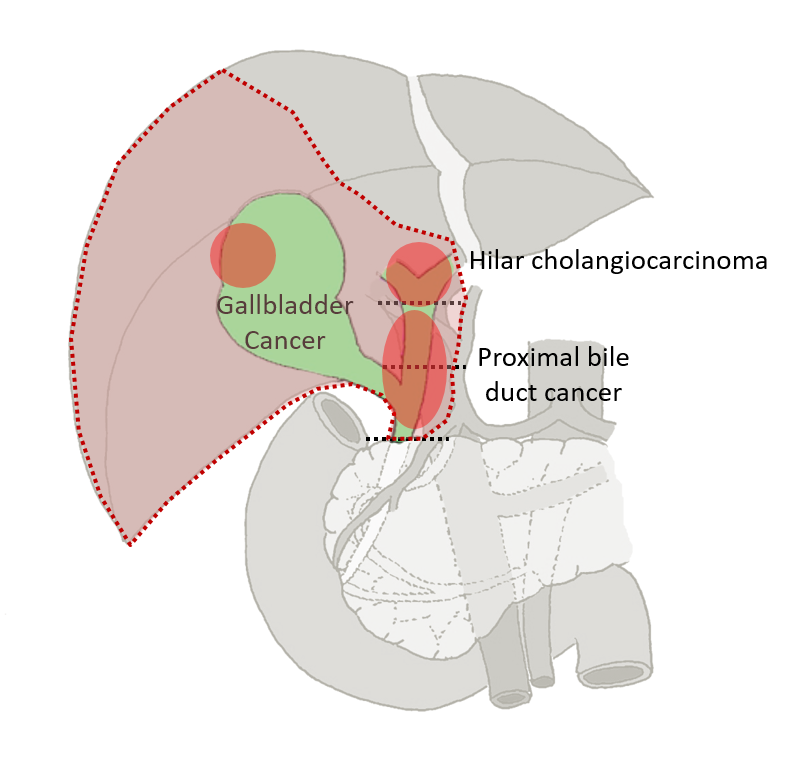
Hilar Cholangiocarcinoma
The “hilum of the liver” is the area where blood vessels that flow into the liver and bile ducts that flow out of the liver are gathered. Since important blood vessels run in this part in a three-dimensionally complicated manner, it is necessary to remove the liver as shown in the figure when treating cancer that occurs in this part. Unlike liver cancer, bile duct cancer is generally not related to underlying liver disease. However, jaundice caused by biliary obstruction may damage the hepatic functional reserve of the liver and resection of hilar cholangiocarcinoma is a high risk surgery with a significant risk of postoperative hepatic insufficiency. Thus, in selected patients, portal vein embolization is performed expecting enlargement of the future liver remnant to decrease the risk of perioperative mortality from liver failure.
Gallbladder Cancer
The gallbladder is a bag-like structure that temporarily stores the bile that flows through the bile ducts. Gallbladder cancer is a highly malignant cancer, so the concept of treatment is different from that of extrahepatic bile duct cancer. Because of the very thin wall and attachment to the liver, gallbladder cancer easily spread to the liver and lymph node, so extended resection including liver parenchyma is sometimes required.
Extensive bile duct cancer
The biliary tract is divided into several areas, the hilar region, upper bile duct, middle bile duct, lower bile duct, papilla, and gallbladder. There is no curative treatment for bile duct cancer other than surgery, and there are many cases in which curative treatment can be expected if complete resection is possible. However, depending on the extent of cancer progression, it may be necessary to remove the liver and/or pancreas, or to perform combined resection and reconstruction of blood vessels such as arteries and portal veins to achieve negative margin resection. Given the nature of highly technical demanding surgery and requirement of perioperative intensive care, surgical treatment of extensive bile duct cancer should be performed in high-volume centers with experiences of such aggressive surgery.